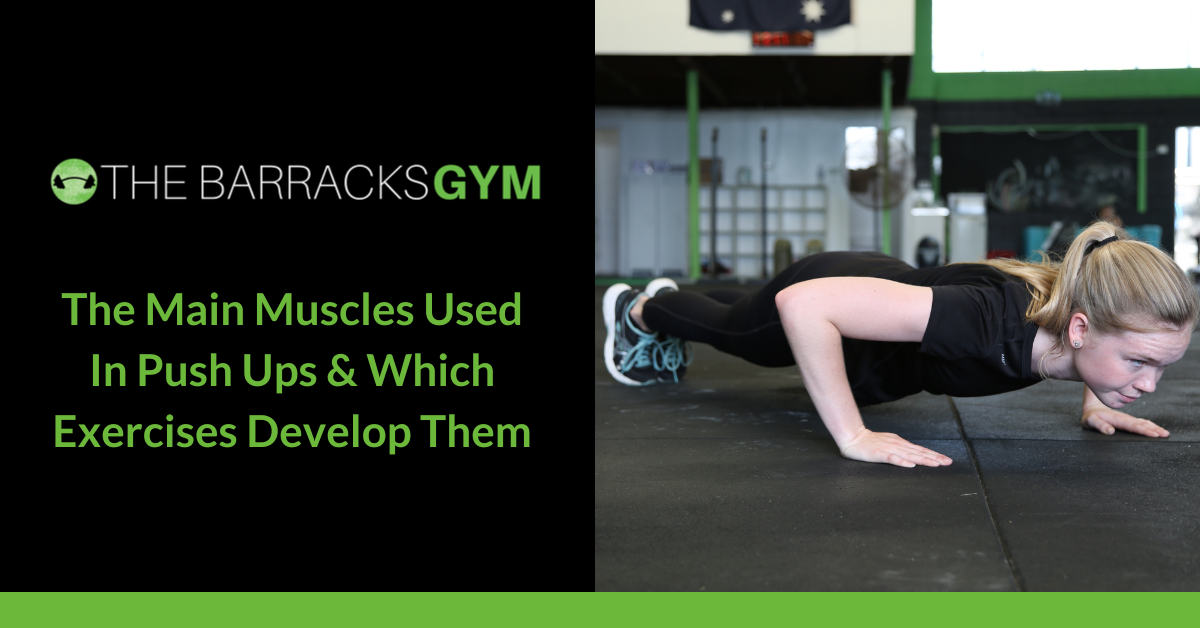|
Have you ever wondered what muscles you use when practicing your push ups for your ADF or Police fitness test and which exercises to do to develop them? Push-ups primarily work the muscles of the chest (pectoralis major), shoulders (deltoids), and triceps. However, they also involve other muscles, including the core, biceps, and back. Here are some exercises that can help develop these muscles: 1. CHest MusclesThe chest muscles, also known as pectoral muscles, are a group of muscles located in the chest area. The main muscle in the chest is the pectoralis major, which is divided into two parts: the clavicular head (upper portion) and the sternal head (lower portion). To develop your chest muscles, you can do exercises such as bench press, dumbbell flys, and chest dips.
2. ShouldersThe shoulder muscles, also known as deltoids, are a group of three muscles that work together to move the upper arm bone (humerus) in various directions. The three heads of the deltoid muscle are the anterior (front), medial (middle), and posterior (rear) heads. Overhead press, lateral raises, and front raises are exercises that specifically target the deltoid muscles and help improve shoulder strength and stability.
3. TricepsThe triceps are the muscles located on the back of the upper arm and are responsible for extending the elbow joint. To develop your triceps, you can do exercises such as tricep dips, tricep pushdowns, and skull crushers.
4. Core musclesCore muscles are a group of muscles located in the abdomen, back, and pelvis that is responsible for maintaining posture, supporting the spine, and providing stability for movement. Push-ups are a great exercise for engaging the core muscles, as they require the muscles in the abdomen, back, and pelvis to work together to maintain proper alignment and stability during the movement. In addition to push-ups, there are many other exercises that can help strengthen the core muscles. Here are some examples:
5. biceps and back musclesAs mentioned, push-ups are not the primary exercises for biceps and back muscles, but they still engage these muscles to a certain extent. The biceps muscle is located on the front of your upper arm and is responsible for flexing your elbow joint, while the back muscles include the latissimus dorsi, trapezius, and rhomboids, which are responsible for movements such as pulling and extending the arms and shoulders. To develop your biceps and back muscles, you can incorporate exercises such as pull-ups, rows, and bicep curls into your workout routine.
conclusionIt's important to note that more than doing push-ups alone is needed to develop these muscle groups fully. It's essential to incorporate a variety of exercises that target these muscles to achieve well-rounded upper-body strength and avoid muscle imbalances. Additionally, proper form and technique during push-ups are crucial to ensure that you're engaging the correct muscles and avoiding injury.
If you want professional guidance on incorporating these movements into your training regime then jump onto our PROGRAMS page and find the right training package for you.
0 Comments
Leave a Reply. |
Most PopularTrusted PartnerWe work with the best service provider for Defence and First Responders.

Get SocialCategoriesArchives
January 2024
|
© COPYRIGHT 2024. ALL RIGHTS RESERVED.


 RSS Feed
RSS Feed